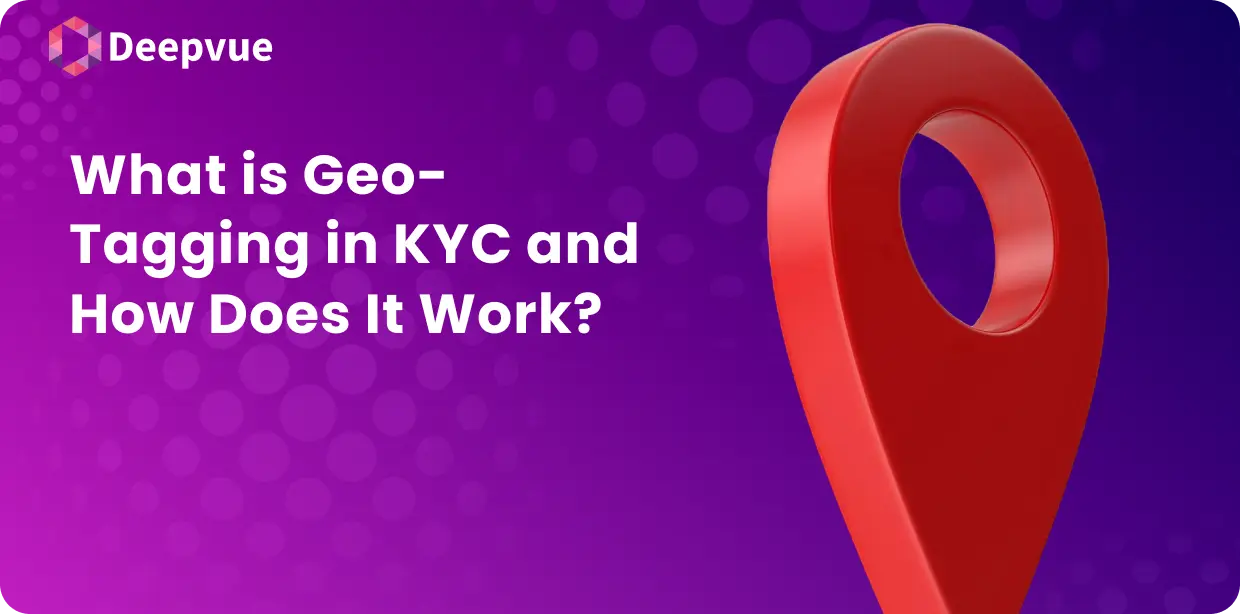In the financial and business world, KYC processes help verify the identities of customers to conform to regulatory requirements. These processes help avoid other illegal practices like money laundering and fraud. Traditionally, KYC means submitting identity documents, proof of address, and sometimes a personal interview. Nevertheless, in the digital age, there are more effective ways to do it, and one of them is geo-tagging.
Geo-tagging refers to the insertion of location-related information into digital content, such as pictures and videos, and even transactions. Geo-tagging is employed in the context of KYC to verify the customer’s location during the KYC verification process, thereby enhancing security and precision. This instrument has rapidly become an indispensable component of the KYC process, particularly for organizations that implement digital onboarding. It ensures that the customer’s claimed location corresponds with the data supplied, thereby enhancing the customer verification experience and preventing fraud.
What is Geo-Tagging?
Geo-tagging is a method of affixing geo-location data, such as latitude and longitude, to a digital interaction, document, or activity. It usually acquires the location data with the help of GPS, mobile networks, or Wi-Fi signals.
It captures the user’s location at a particular time and associates it with a transaction or activity using geo-tagging. For instance, it can capture a user’s location and associate it with an address provided in the course of digital KYC. The system utilizes geospatial data to ensure that the user is indeed located at the reported location.
For example, if a consumer creates an account from another country than from where the consumer is known to reside, this might be a red flag. Such accounts can be identified by financial institutions using geolocation technology for closer scrutiny.
How Geo-Tagging Works in KYC?
Geo-tagging works by attaching location information with the process of ascertaining the identity of the customer. Here is how it works in the KYC process:
- Collecting Location Data (GPS, IP address, etc.)
The location of the customer is captured at the key verification points, like document uploads and account registrations, while shopping online. In this regard, mobile devices use GPS data to capture the location, and desktop users have the option of location-based tracking through their IP addresses.
- Linking Location to Customer Documents or Activities
The location information is then matched with the action taken by the customer, including submitting identification papers or other applicable activities while signing up. Thus, the geographic location of the customer will align with the data he provides to the system.
- Verifying Location Consistency with Declared Details
The final step is to cross-check the location data with the information that the customer has given in the KYC verification process. For example, if a customer says he is from a specific city, then the geo-tagging system can cross-check if his location is in that specific address or region. If the information does not tally or shows inconsistencies, it can be subjected to further checks, avoiding fraud possibilities.
Benefits of Geo-Tagging in KYC

- Risk Management and Fraud Prevention: Geo-tagging provides another layer of security because it ensures that the customer’s location matches the information he or she has submitted. This prevents the occurrence of fraudulent activities due to the discrepancies that may have shown up during that process.
- Enhanced Accuracy in Customer Verification: Geo-tagging ensures that the process of verification is more accurate since it correlates the location information with the documents submitted. This results in more accurate customer KYC verification. It enhances the overall accuracy of KYC procedures by reducing errors in verifying customer details.
- Real-Time Data for Improved Decision-Making: Geo-tagging enables businesses to access real-time location information, which facilitates quicker decision-making during the verification process. This guarantees that the onboarding procedure is both efficient and timely, thereby enhancing the customer experience.
- Enhanced Efficiency and Decreased Manual Errors: Geo-tagging automates a critical component of the verification process, eliminating the need for constant human interaction. This provides a more scalable and reliable system which reduces human error, therefore speeding up the verification.
Geo-Tagging: The Next Step in KYC
Geo-tagging improves the accuracy and reliability of location data and hence reduces fraud in KYC. It thereby accelerates secure customer enrollment in compliance workflows and optimizes related functions and processes.
Geo-tagging should be integrated into the KYC policy of businesses in various industries to remain ahead in the increasing competition and high degrees of digitization. Geo-tagging would help compliance with regulations and ensure that companies build strong security and increase customer trust.
Elevate your KYC process effortlessly by contacting experts for additional information or customized services at Deepvue.tech.
FAQ:
What is geo-tagging in KYC?
The process of capturing and attaching a user’s geographic location during identity verification via GPS, IP, or network data is called geo-tagging in KYC. It ensures that the customer’s location corresponds with information submitted at registration or transactions.
How does geo-tagging improve KYC processes?
Geo-tagging increases security since it verifies the physical location of users. The risk of fraud is reduced since it guarantees compliance, and this is offered through real-time validation while performing transaction activities or registering the customer.
What technologies facilitate geotagging?
Geo-tagging is a method that uses technologies including GPS, mobile network triangulation, Wi-Fi positioning, and monitoring of the IP address to attach location data to KYC activities.
What are the risks with geo-tagging?
The challenges include privacy concerns, inaccuracies in areas with poor connectivity, and differences in jurisdictions’ legal requirements for acquiring location data.








